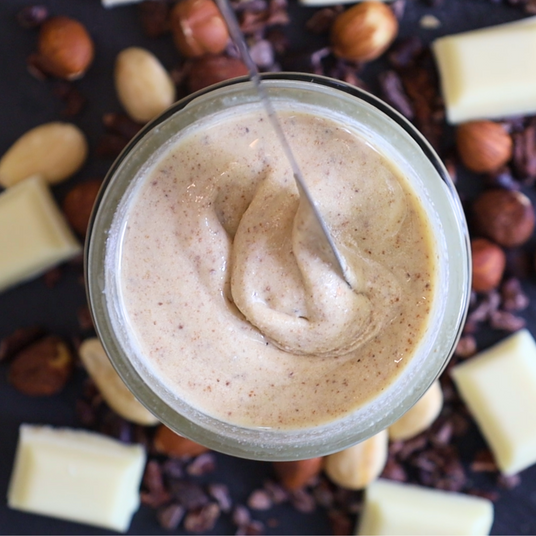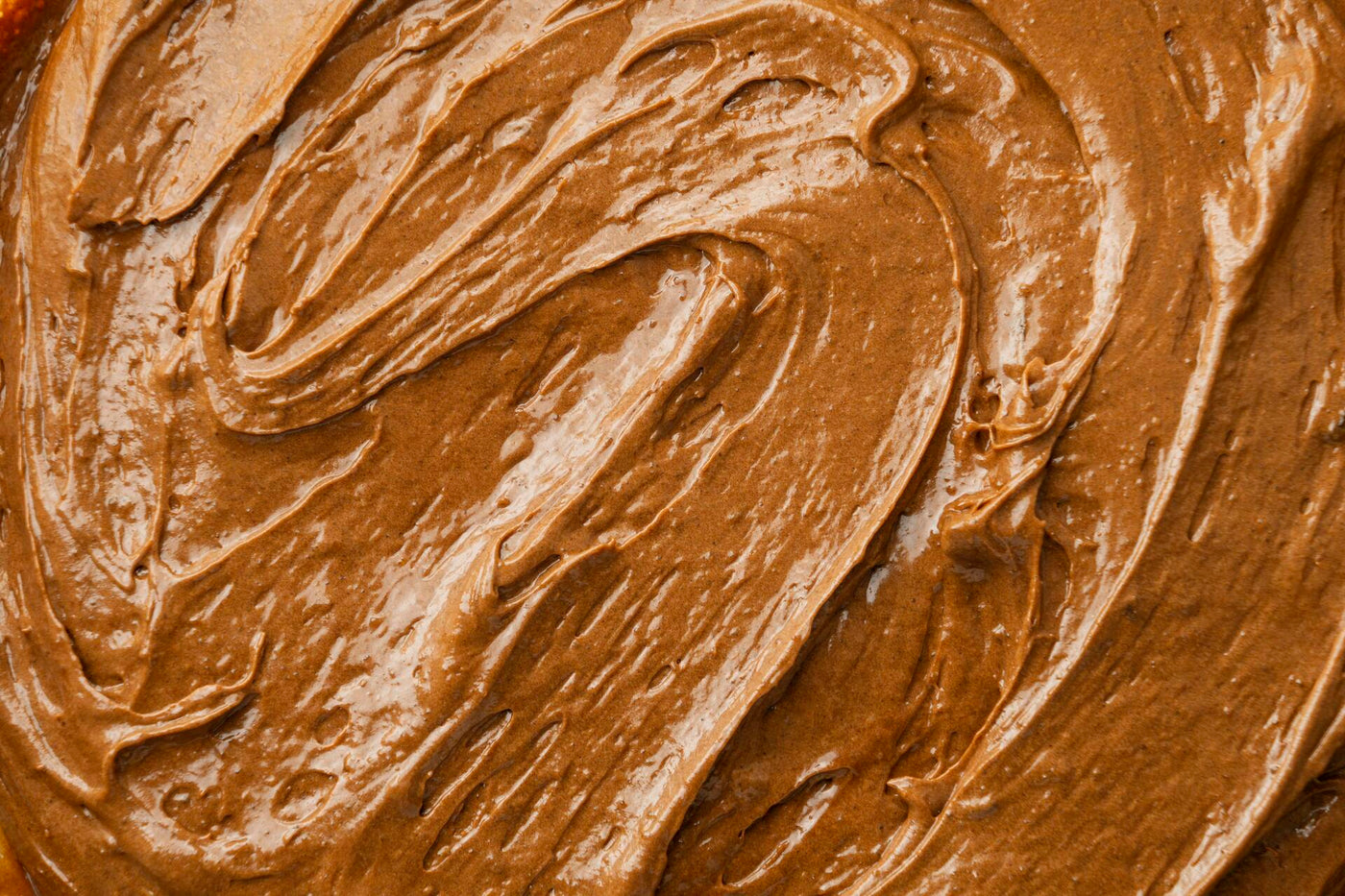
You've bought a nut spread and are excited to dip a spoon into it, but when you open it, you're in for a surprise. You discover small white dots on the surface. What could this be? And is the spread spoiled? We'll be happy to answer all of these questions for you in the following article.
It's important to say right from the start—NO, the nut spread is not spoiled. While the white spots mentioned above may look like mold at first glance, they're actually the opposite. They're what's known as sugar or fat bloom. So, it's nothing serious; you can enjoy your nut spread once you've removed the unsightly blooms with our help. But first, let's explain together how sugar blooms develop.
How does the flower form?
How does the flower form?
It's usually caused by temperature fluctuations that can occur at home or during delivery. As you've probably guessed, the bloom, in the form of sugar or fat crystals, doesn't appear immediately after production, but only later. Without the use of emulsifiers, this can't be completely prevented, but on the other hand, it has an undeniable advantage!
It proves that our nut creams are of high quality and contain only nuts. We don't use any other additives such as added sugar or oils.
Types of flowers
Types of flowers
Besides sugar bloom, there are two other types: fat bloom and cocoa bloom. Neither is harmful to health and can be eliminated quite quickly. Nevertheless, we would like to briefly introduce them and explain the reasons for their occurrence.
Sugar blossom
Sugar blossom
The occurrence of this odor is preceded by poor storage conditions for nut creams. The problem lies primarily in high humidity or rapid changes from low to high temperatures. The water vapor condenses on the surface of the cream, and the sucrose dissolves in the precipitated water. When the water subsequently evaporates, it crystallizes, forming a white film on the surface of the cream—sugar bloom.
Fat bloom
Fat bloom
Temperature fluctuations during transport and storage of nut cream are also a cause of fat bloom. Unlike sugar bloom, this manifests itself as fat crystals that may protrude from the cream. They usually form a uniform whitish coating covering the entire surface of the cream. This phenomenon occurs most frequently, even when nut cream is produced under optimal temperature conditions.
Cocoa blossom
Cocoa blossom
This type of blooming can occur on the surface of nut spreads that contain cocoa or chocolate in addition to nuts. It is caused by the crystallization of cocoa butter. How does it occur? Again, temperature fluctuations during transport are the cause. The ground nuts used to make the spreads contain oils that can melt the cocoa butter. This can lead to an unsightly white coating on the surface of the spread, reminiscent of the mold mentioned above. Now you know, however, that such a coating is not harmful to health and does not even reduce the quality of the spread you purchased.
How do you get rid of the bloom?
How do you get rid of the bloom?
It's easy! Place the peanut butter affected by blooming in a water bath, heat it, and stir thoroughly. All the ingredients will combine beautifully, and you can finally enjoy your peanut butter.




